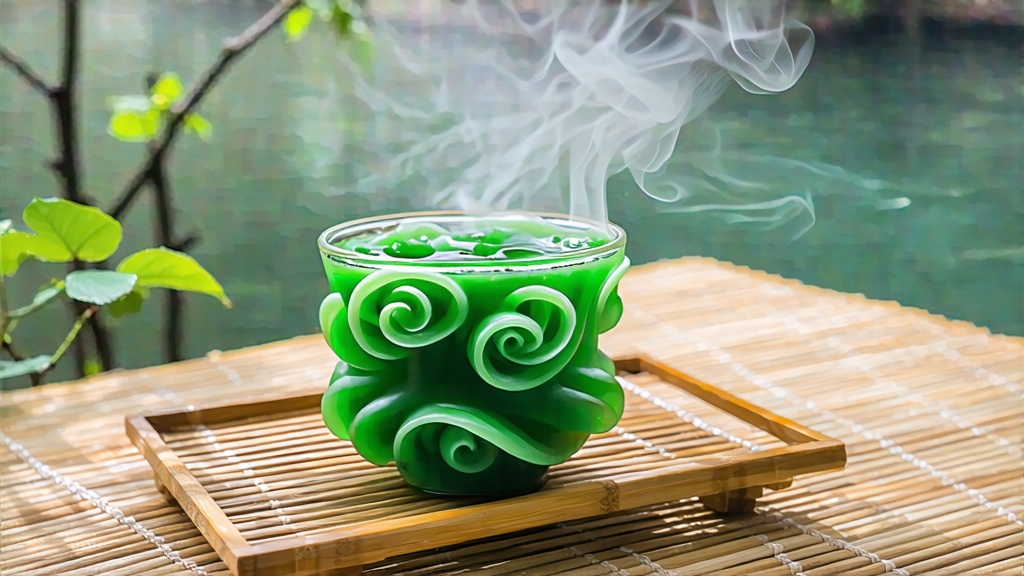
Biluochun, whose name literally means “Green Snail Spring,” is one of China’s ten most celebrated teas, yet it remains a quiet miracle even inside the country. Grown on the mist-lapped islands and peninsulas of East China’s Taihu Lake, the tea is so tiny, so fragrant, and so labor-intensive that connoisseurs often finish their first cup before they fully grasp what they have tasted. To the international palate it offers a paradox: the lightest of green liquors that somehow carries the sweetness of ripe peaches, the creaminess of fresh chestnuts, and the marine lift of a sea breeze. Understanding Biluochun is therefore less about memorizing facts and more about surrendering to a landscape in miniature.
History: From Poison to Tribute
Local legend places the tea’s birth in the late Kangxi period (around 1699). A tea-picker, so the story goes, ran out of room in her basket and tucked the fresh leaves between her breasts. The warmth released an intoxicating aroma that startled her; monks later named the tea “Scary Fragrance.” When the Kangxi Emperor visited Suzhou, officials presented the tea. The emperor declared the name vulgar and rechristened it Biluochun, referencing its snail-shell shape and spring harvest. Within decades the tiny tea became tribute, traveling north along the Grand Canal in bamboo-lined chests cooled by lake ice. European merchants first recorded it in 1843 as “Pi-lo-chun—greenest of the green,” fetching twice the price of Keemun black tea in London.
Terroir: Lake, Mist, and Fruit Trees
Authentic Biluochun comes only from a 20-kilometer crescent of hills in Dongting Mountain, an island of basaltic rock inside Taihu Lake. The lake’s 220-day annual fog slows photosynthesis, concentrating amino acids and volatiles. Unlike most tea gardens, these slopes are interplanted with peach, plum, and loquat trees; their roots share mycorrhizal fungi with the tea bushes, and their blossoms add airborne yeasts that subtly ferment the leaf surface during withering. The result is a natural fruit note impossible to replicate in greenhouse experiments. Soil is a thin, acidic layer over weathered tuff rich in iron and manganese; drainage is so rapid that roots dive two meters, giving the tea a mineral backbone that lingers as a cool, metallic finish on the tongue.
Cultivars: Two Families, One Mountain
Farmers distinguish between Xiao Ye (Small Leaf) and Da Ye (Big Leaf) biotypes. Xiao Ye, the older strain, has leaves barely 2 cm long, yielding only 250 g of finished tea per mu (1/15 hectare) but delivering the most complex aroma. Da Ye, selected in the 1960s for higher yield, produces 400 g per mu yet can taste flat unless grown above 200 m elevation. A clonal offshoot named “Wuniuzao” ripens seven days earlier and is often marketed as Mingqian (pre-Qingming) Biluochun, but purists insist only Xiao Ye picked in the five days around Tomb-Sweeping Day deserves the name.
Plucking: One Bud, One Leaf, 6 mm
The harvest window is cruelly short: from March 20 to April 5, when overnight temperatures hover at 12 °C and daytime fog keeps leaf moisture above 78 %. Pickers—mostly women wearing bamboo hats—pluck exactly one unopened bud and the adjacent leaf, each pair no longer than 6 mm, the length of a housefly. Speed is measured not in kilos but in individual shoots: an experienced picker collects 1,200 shoots per hour, barely 200 g fresh weight. To fill a 500 g tin of finished tea requires 60,000 such pairs, all plucked before 9 a.m. when the sun burns off the mist and enzymatic activity spikes.
Crafting: Hand Fire in a Wok the Size of a Moon
Withering happens in the shade of peach trees for 30 minutes; the leaf loses 5 % moisture and absorbs blossom volatiles. Fixing follows immediately in a 160 °C wok, a cast-iron moon 60 cm wide. The master’s left hand flings the leaves skyward while the right presses them against the wok wall for three seconds—any longer and the amino acids caramelize, killing the peach note. This “fling-press-fling” cycle repeats 300 times over 15 minutes, reducing leaf